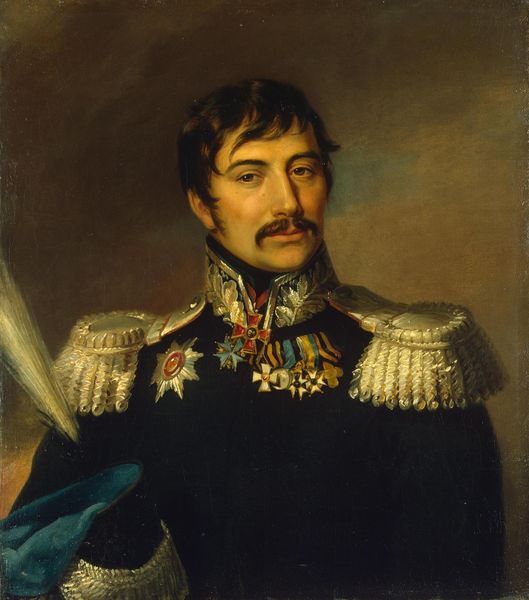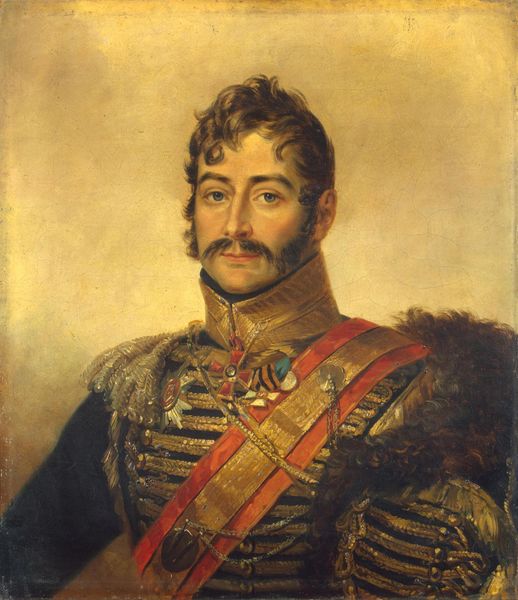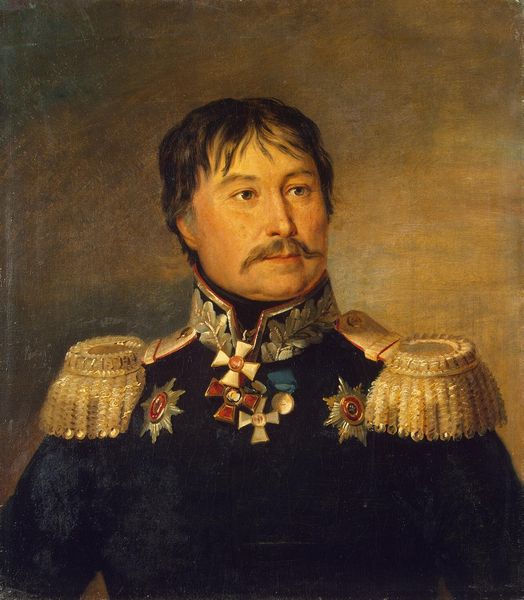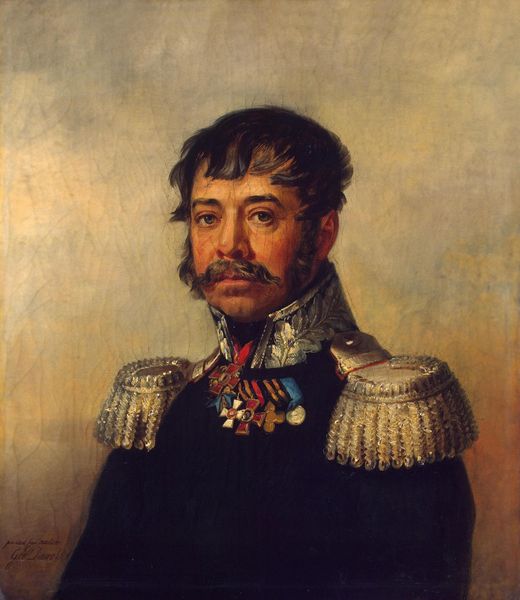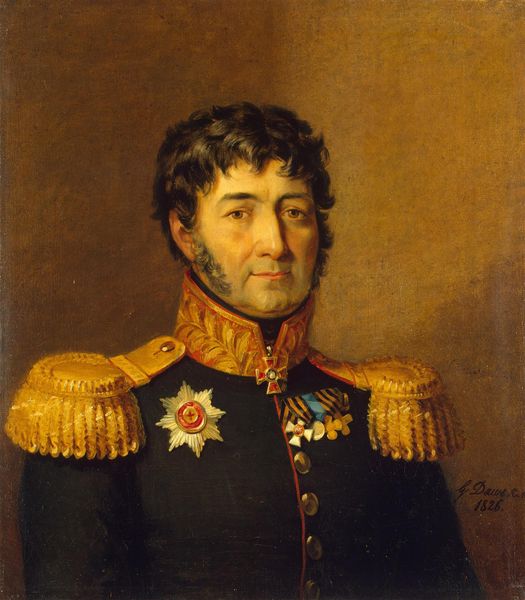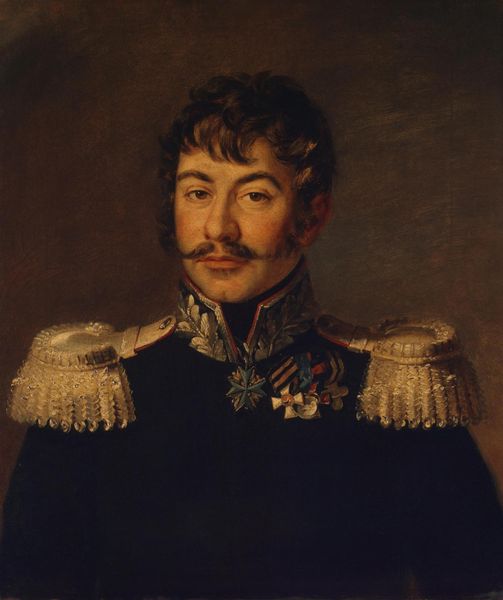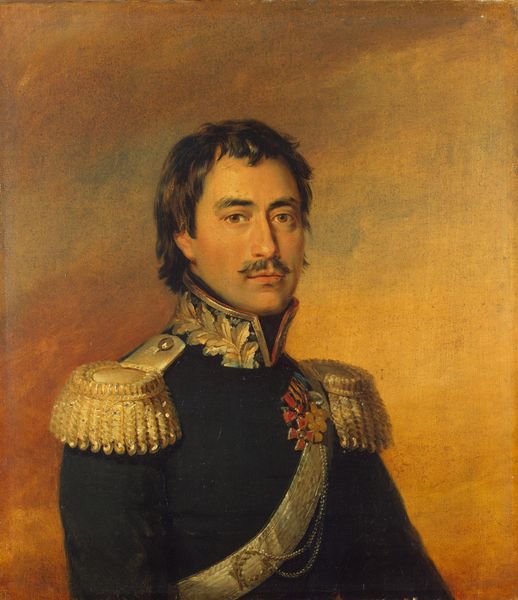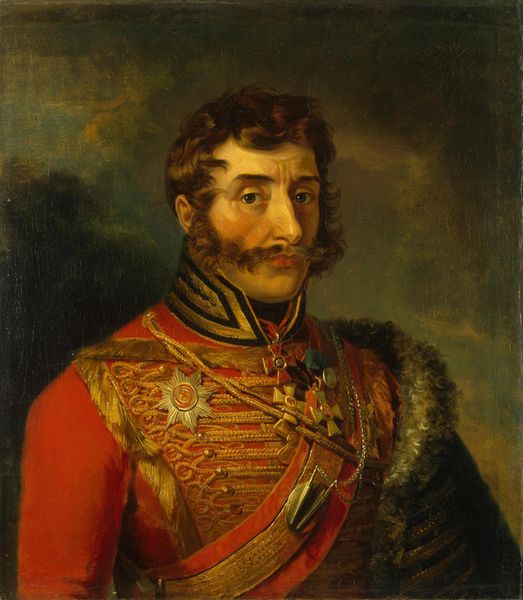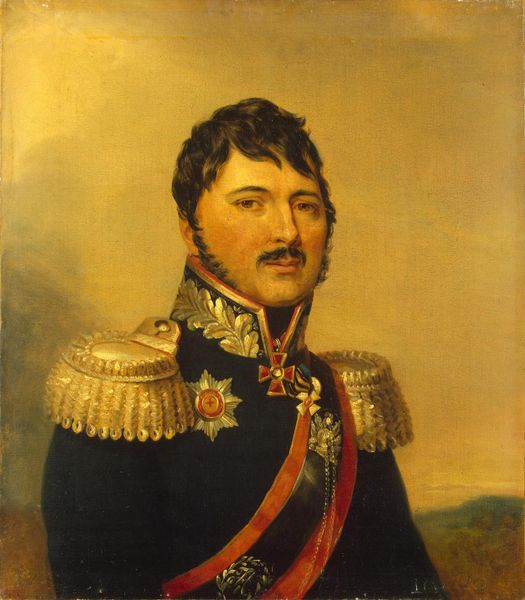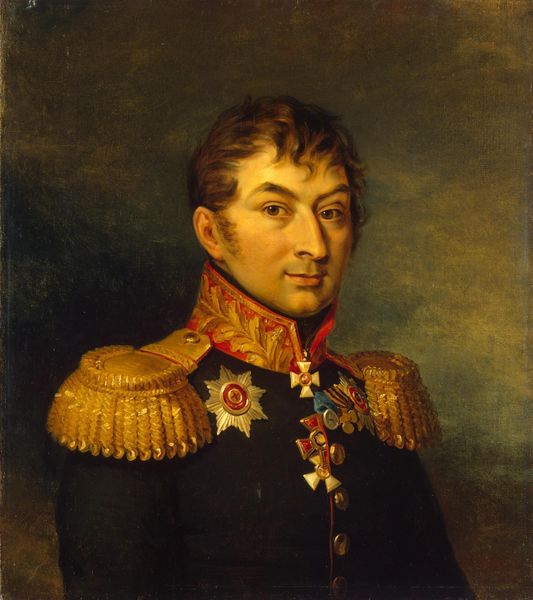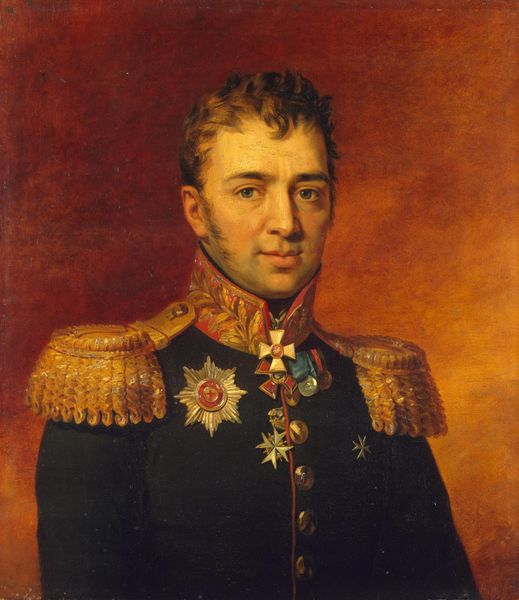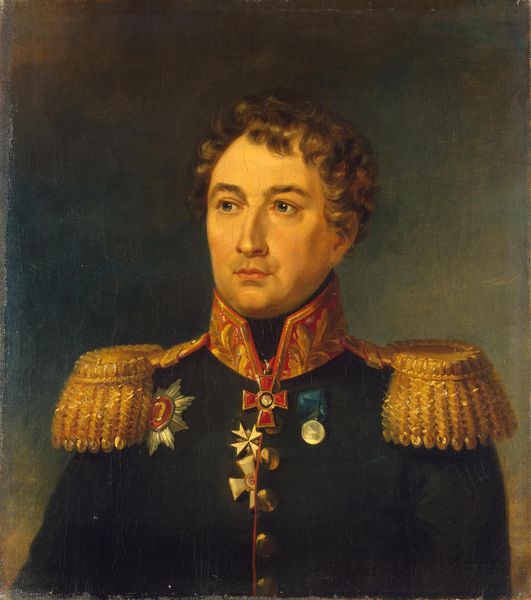
painting, oil-paint
#
portrait
#
painting
#
oil-paint
#
classicism
#
romanticism
#
history-painting
#
academic-art
#
miniature
Copyright: Public domain
Curator: Standing before us is George Dawe's "Portrait of Gavriil A. Lukovkin," painted in 1828. It's currently held at the Hermitage Museum in St. Petersburg. Editor: The overall tonality strikes me first; it’s subdued yet there is a sharpness in his face, a quiet but commanding presence conveyed through classical portraiture. The gilded epaulets really capture the light, pulling your eye there. Curator: Dawe was commissioned to paint portraits of Russian generals after the Napoleonic Wars. Lukovkin, as suggested by the medals and the ornate uniform, would have been part of that elite. I find myself contemplating the system that elevated this man and others like him and how art served this order. Editor: Yes, but also notice how Dawe employs classical elements. The restrained palette and clear structure support an overriding formalism, where every element supports the powerful presence of the sitter. It's quite successful in that. Curator: Perhaps, but that formality is also revealing. The construction of such a grand, dignified image necessitates considering labor. Who crafted this elaborate uniform? Where were these medals produced? The gold, the textiles, even the pigments of the painting itself have histories, you know. Editor: I appreciate that broader context, but I’m still struck by Dawe's formal command. Look how the light renders the soft texture of the fur stole in contrast to the metal and brocade on the military attire, it guides the eye. I see that as less political but as simply demonstrating artistic genius, you know. Curator: Perhaps both arguments intersect. These textural details – the luxurious fur, the weight of the medals, and the expensive materials – don't simply signify craftsmanship. They visualize power, the spoils of military success, you see? Editor: I grant you that. And in that sense, Dawe's work has layers to decode that are far deeper than a basic surface reading allows. Curator: Exactly. Analyzing how such objects achieve symbolic value gives us access into an entire societal structure— the economics, class relations, power relations. I think, overall, this provides valuable ways to analyze not only this painting but many artworks in our museum. Editor: For me, engaging with this piece has reinforced the impact formalist considerations provide and it serves as a jumping-off point into a wider discussion.
Comments
No comments
Be the first to comment and join the conversation on the ultimate creative platform.
